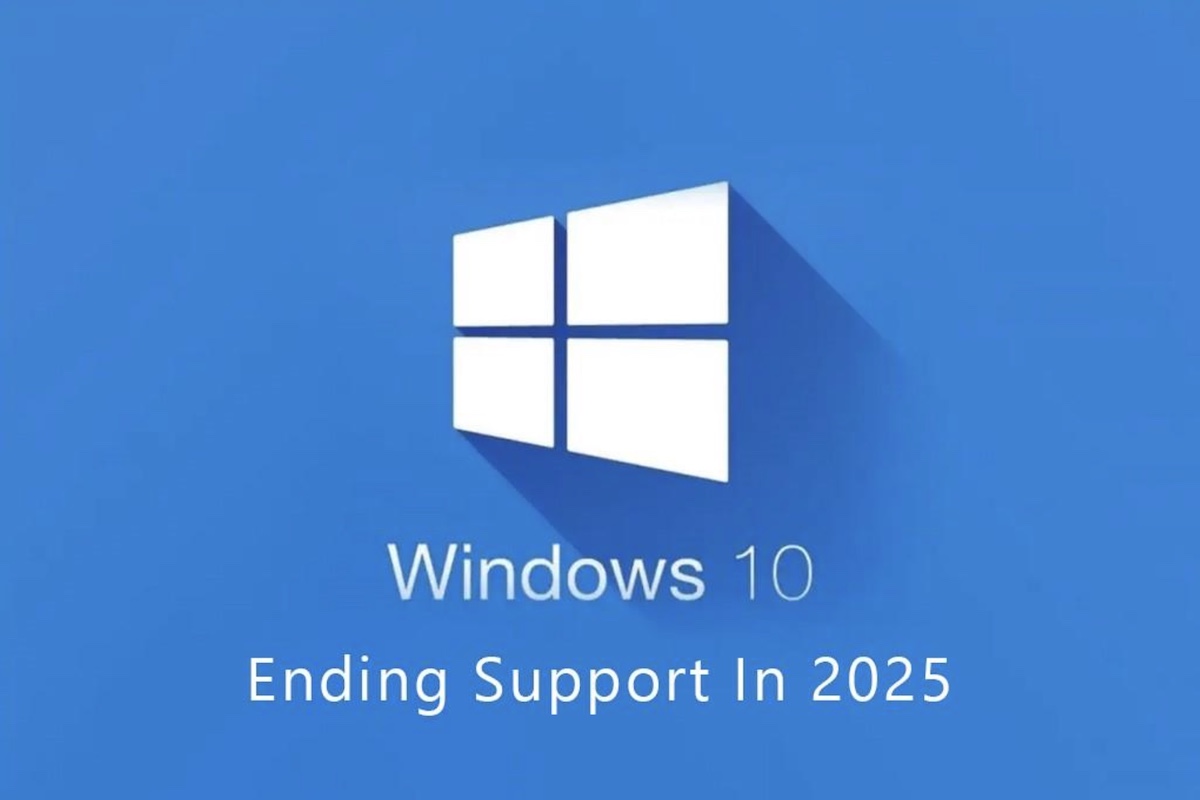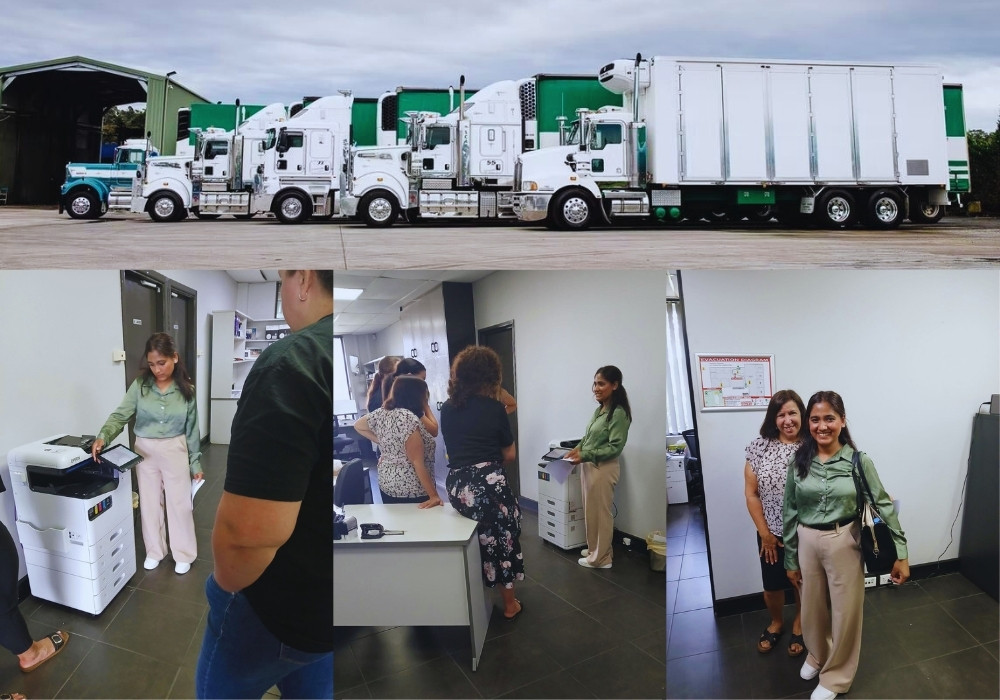Sujita KC is a talented IT support professional at Orion Technologies, known for her strong technical expertise and commitment to exceptional customer service. With a proven track record in diagnosing and resolving technical issues, Sujita plays a key role in ensuring smooth IT operations and customer satisfaction at Orion Technologies.
Uncategorized
Windows 10 End of Support: What Australian Businesses Must Do Now to Stay Secure and Compliant
The end of support for Windows 10 will occur on October 14, 2025, marking the cessation of security updates, feature updates, and technical support from Microsoft. For businesses, this has significant implications, including heightened security risks, compliance challenges, and the urgent need to upgrade to supported operating systems like Windows 11 to maintain operational security and efficiency. Additionally, the Notifiable Data Breaches (NDB) scheme in Australia mandates organisations to report eligible data breaches that pose serious harm to individuals, impacting how businesses manage and disclose cybersecurity incidents.
Building the Foundation of AI Excellence: What Every Organisation Needs to Know
Artificial intelligence (AI) continues to transform how organisations operate, innovate and compete in today’s fast-paced world. However, before diving into AI adoption, it is crucial for businesses to establish a solid foundation based on quality data and sustainable practices.
Why Data is the Cornerstone of AI Success
AI systems are only as effective as the data they are trained on. Without clean, accurate and well-organised data, AI projects often fall short of expectations. Organisations must dedicate time to understanding and preparing their data to ensure AI delivers meaningful insights and measurable business benefits.
Exciting News: Fa Scarcella Transport Upgrades with Orion Printing and Imaging Solutions!
We are thrilled to announce that Fa Scarcella Transport, a renowned transport company based in NSW, Australia, has taken a significant leap forward by integrating cutting-edge Epson solutions into their operations. This upgrade not only enhances their efficiency but also underscores their commitment to innovation and customer satisfaction.
About Fa Scarcella Transport
Fa Scarcella Transport has been a stalwart in the road freight business since the late 1960s. With two offices in Sydney and Darwin, has a rich history of transporting and produce for rural communities all over they have diversified to offer premium services across the eastern seaboard. Their expertise spans bulk haulage, express freight, refrigerated transport, and more, making them a trusted name in the industry.
Orion Technologies: Evolving Beyond Print to Power Your Entire Office
We are excited to announce a new chapter in our journey. Formerly known as Orion Print Management, we have rebranded as Orion Technologies to better reflect the broad scope of solutions we now provide. While print management remains at our core, we have expanded to become your trusted partner for all office technology needs.
From Print Specialists to Complete Office Technology Experts
For years, Orion Print Management earned its reputation by delivering reliable, cost-effective print solutions tailored to businesses across Sydney and beyond. However, with the evolving demands of modern workplaces, we recognised the need to offer a wider array of services to support your entire office technology environment.
Government Small Business Energy Incentive: What You Need To Know

Attention small business owners! Are you ready to take your business to the next level with an energy transformation? The upcoming Budget is putting small businesses front and center with an exciting new tax incentive designed to propel your energy efficiency forward.
The government has recently introduced the Small Business Energy Incentive, aimed at empowering up to 3.8 million small-and medium-sized businesses to save energy and reduce their energy bills. With this incentive, businesses with annual turnover of less than $50 million can enjoy an additional 20% deduction on spending towards electrification and enhancing energy efficiency.
Revolutionise Your Business Communications with VoIP: A Comprehensive Guide

In today’s rapidly evolving business landscape, effective communication is paramount to success. Voice over Internet Protocol (VoIP) technology has emerged as a game-changer, offering businesses scalable, cost-effective, and feature-rich solutions to meet their communication needs. In this comprehensive guide, we’ll explore how VoIP can revolutionise your business communications.
Understanding VoIP
VoIP enables voice communication over the internet, replacing traditional phone lines with digital transmission. This technology converts voice signals into data packets, allowing for seamless transmission over IP networks. By harnessing the power of VoIP, businesses can leverage a wide range of advanced features and benefits.
Key Benefits of VoIP for Business:
Cost Savings: VoIP eliminates the need for costly traditional phone lines and reduces long-distance charges. With VoIP, businesses can enjoy significant cost savings on both local and international calls.
Scalability: VoIP systems are highly scalable, allowing businesses to easily add or remove users as needed. Whether your company is experiencing rapid growth or seasonal fluctuations, VoIP adapts to your changing requirements without the hassle of hardware upgrades.
Flexibility and Mobility: VoIP enables employees to make and receive calls from anywhere with an internet connection. Whether they’re in the office, working remotely, or traveling, employees can stay connected using their VoIP-enabled devices.
Advanced Features: VoIP offers a wide range of advanced features, including voicemail-to-email transcription, call forwarding, auto-attendants, conference calling, and more. These features enhance productivity, streamline communications, and improve customer service.
Implementing VoIP in your business
Assess Your Needs: Identify your business communication requirements and objectives. Determine the features and functionalities that are critical for your operations.
Choose the Right Provider: Select a reputable VoIP service provider that offers reliable connectivity, robust features, and responsive customer support. Consider factors such as pricing, scalability, service level agreements (SLAs), and integration capabilities.
Installation and Configuration: Work with your VoIP provider to install and configure the system according to your business requirements. Ensure proper network infrastructure and adequate bandwidth to support VoIP traffic.
Training and Adoption: Provide training and support to employees to ensure smooth adoption of the new VoIP system. Familiarise them with features and best practices to maximise productivity and efficiency.
Maximising the Potential of VoIP
Continuously evaluate and optimise your VoIP system to meet evolving business needs. Leverage analytics and reporting tools to gain insights into call patterns, customer interactions, and performance metrics. Explore integrations with other business applications to enhance workflow automation and collaboration.
VoIP technology offers businesses a powerful and cost-effective solution for modernising their communication infrastructure. By embracing VoIP, businesses can enhance productivity, improve customer service, and gain a competitive edge in today’s digital marketplace. Ready to unlock the full potential of VoIP for your business? Contact us today to learn more about our comprehensive VoIP solutions tailored to your unique needs. Let’s revolutionise your business communications together.
Eco-Friendly Printing Practices: Reducing Your Office’s Carbon Footprint

Want to make a positive impact on the environment while enhancing your office efficiency? Consider implementing these eco-conscious printing rules.
Consolidate Your Machines
Simplify your office setup by replacing multiple devices with versatile Multifunction Printers (MFPs). By integrating scanning, faxing, copying, and printing functionalities into one device, you not only reduce your carbon footprint but also save energy, supplies, and valuable office space. It’s a win-win solution that promotes sustainability while optimising productivity.
Set Pop-up Warnings
Leverage the features of modern printers to promote mindful printing habits. Configure pop-up warnings to alert users about printing rules and the environmental impact of their choices. These reminders encourage responsible printing behaviour, prompting users to reconsider before printing unnecessary documents such as emails or web pages. With informed decision-making, you can minimise paper waste and contribute to a greener workplace.
Digitise, Whenever Possible
Embrace digital alternatives to traditional paper-based processes. Digitising documents not only reduces paper consumption but also streamlines data management. Explore document management software solutions to efficiently digitise, organise, and store business data. By transitioning to digital workflows, you not only reduce your environmental footprint but also enhance accessibility and collaboration within your organisation.
By adopting these printing rules, you can transform your office into an eco-friendly workspace while promoting efficiency and sustainability. Let’s work together to make a positive impact on the planet, one print at a time.
Unlocking Success: Tips for Maximising Your Managed Print Services (MPS)

In today’s fast-paced business landscape, Managed Print Services (MPS) have emerged as a strategic tool for small-to-medium-sized enterprises seeking to optimise efficiency and drive cost savings. With MPS, businesses can streamline their print operations, enhance productivity, and achieve significant returns on investment. To ensure you’re reaping the full benefits of your MPS partnership, consider these essential tips.
Define Clear Objectives
Set specific and measurable goals in collaboration with your MPS provider. Whether your focus is on reducing printing costs, enhancing IT productivity, or improving workflow efficiency, clear objectives provide a roadmap for success. Regularly review and adjust these benchmarks to track progress and evaluate the effectiveness of your MPS services.
Plan for Scalability
Anticipate the future growth of your business and ensure your MPS provider is equipped to scale your print infrastructure accordingly. Discuss long-term business projections and assess how changes in your organisation will impact your print environment. A proactive approach to scalability ensures seamless expansion without compromising efficiency or incurring unnecessary costs.
Maximise MFP Capabilities
Explore the full potential of your Multifunction Printers (MFPs) by leveraging advanced workflow tools tailored to your business needs. Collaborate with your MPS provider to analyse workflow processes and identify opportunities for optimisation. From HR to legal and accounting departments, customised software solutions integrated with MFP devices can streamline tasks and boost productivity.
Maintain Open Communication
Foster a strong partnership with your MPS provider through regular communication and feedback. Stay engaged by promptly responding to inquiries regarding MPS goals, output status, hardware maintenance, and consumable supplies. Effective communication ensures alignment with objectives and facilitates timely adjustments to keep your print environment optimised.
Ready to unlock the full potential of Managed Print Services for your business? Contact us today to schedule a complimentary print assessment and discover how an MPS solution tailored to your unique needs can drive maximum results. Let’s embark on a journey toward enhanced efficiency and cost savings together.
Mastering Efficiency: How Business Technology and Print Services Can StreamlineYour Workflow

In today’s competitive business landscape, efficiency is more than just a buzzword—it’s a strategic imperative. Streamlining workflows lies at the heart of operational excellence, enabling organisations to optimise resources, reduce costs,and accelerate growth. With the right blend of business technology solutions, companies can transform their processes and unlock new levels of productivity. In this blog post, we’ll explore how leveraging business technology can streamline workflows and drive success.
Understanding Workflow Streamlining
Workflow Streamlining involves analysing and optimising the sequence of tasks, activities, and processes within an organisation. By eliminating redundancies, automating manual tasks, and enhancing collaboration, businesses can achieve greater efficiency and agility. This not only saves time and resources but also improves overall quality and customer satisfaction.
The Role of Business Technology
Business Technology plays a pivotal role in streamlining workflows by providing innovative tools and solutions tailored to specific business needs. Here are some key ways in which technology can transform workflows:
Automation: Automation tools streamline repetitive tasks and processes, reducing manual intervention and minimising errors. From invoice processing and document approvals to customer support and inventory management, automation streamlines operations, improves accuracy, and frees up valuable time for employees to focus on higher-value activities.
Integration: Integrating disparate systems and applications enables seamless data flow and communication across departments. Whether it’s integrating CRM with marketing automation software or connecting inventory management systems with accounting software, integration eliminates silos, enhances collaboration, and improves decision-making.
Cloud Computing: Cloud-based solutions provide anytime, anywhere access to critical business applications and data. By migrating workflows to the cloud, organisations can centralise information, enhance scalability, and improve collaboration among remote teams. Cloud computing also reduces infrastructure costs and ensures data security and compliance.
Analytics and Insights: Data analytics tools provide valuable insights into workflow performance, identifying bottlenecks, and areas for improvement. By analysing key metrics and trends, organisations can make informed decisions, optimise processes, and drive continuous improvement.
Implementing Business Technology for Workflow Streamlining
Assessment: Start by conducting a thorough assessment of existing workflows to identify pain points and areas for improvement.
Solution Selection: Choose business technology solutions that align with your organisation’s goals and requirements. Whether it’s workflow automation software, collaboration tools, or cloud-based platforms, select solutions that offer scalability, flexibility, and ease of integration.
Implementation: Work closely with technology providers to implement and configure solutions according to your specific needs. Ensure proper training and support for employees to maximise adoption and effectiveness.
Continuous Improvement: Monitor workflow performance regularly and solicit feedback from users. Continuously evaluate and optimise processes to adapt to changing business needs and market dynamics.
In today’s digital age, leveraging business technology is essential for streamlining workflows and driving organisational success. By embracing automation, integration, cloud computing, and analytics, businesses can optimise processes, enhance collaboration, and stay ahead of the competition. At Orion, we’re committed to helping you harness the power of technology to master efficiency and achieve your business objectives. Contact us today to learn more about our tailored solutions for workflow streamlining and optimisation. Let’s embark on a journey towards greater productivity and success together.





